A Research & Innovation Programme to bring Scotland’s water sector together to drive #NetZero, led by Prof. Andrew Tyler, hosted by University of Stirling and funded by Scottish Water.
Don't wanna be here? Send us removal request.
Text
Romance and sewage go hand in hand
We are delighted to welcome Jocelyn Rose into our HNC family. A Doctoral Researcher at GCU, supervised by Ania Escudero, Jocelyn's studentship 'Valorising sludge biomass waste via low-temperature processing towards a circular economy' is co-funded by GCU, Scottish Water & the Energy Technology Partnership (ETP).
Fiona caught up with Jocelyn to learn a bit more about her and her motivation to examine sludge towards a circular economy - did you know that Sludge is a gateway into the status of human and animal health?
Join us for more for Jocelyn's journey to her doctoral research and more cool facts like "Romance and sewage go hand in hand".

The main aim of Jocelyn's doctoral research is to showcase innovative technologies to capture carbon and produce a valuable product from bioresources. In turn her research will support Scottish Water to develop their bioresource strategy in order to reach their Net Zero target by 2040 - that's impactful research, let's find out a bit more about her and the research.
Sludge is full of viruses, bacteria, environmental contaminants and consumed contaminants, which tell us how a population is living, and how healthy they are. During the pandemic, the Covid virus was detectable in sludge, which helped identify hotspots and new strains very quickly. So there is lots to be learnt from sludge.
When asked to tell us something interesting about sludge and Jocelyn made the comparison between romance and sewage noting that Venus Cloacina was the Roman goddess who combined a role as a purifier of sewers with the attributes of love and beauty we knew we had to know more.

Q: What's your education background?
My first degree was in Agriculture at Aberystwyth in Wales but through work interests I also did a Post Graduate Certificate in Sustainable Aquaculture at St Andrews, which I followed up through lockdown with an MSc in Waste Management at UWS.
My work experience has been very much based in those 3 areas - I have always been interested in how the two, sustainable aquaculture & Waste management, interact and offer opportunities for improvement.
Q: We are all about water in HNC, do you have a favourite water body?
The Pentland Firth was a major sea highway over millenia and is one of the most beautiful places in Scotland. I live at its edge and there is an everchanging play of light and sound with an astonishing diversity of wildlife and archaeology.
There is a rich history of folk lore about witches, mermaids and Vikings and the old name used to be the Sea of the Orcs- which is cool if you’re a Tolkein fan! Plus a retired Northlink ferryman told me that he had calculated there was a set of false teeth resting on the sea bed for every 100m of the journey from Scrabster to Stromness due to the roughness of the journey.
Q: You started your doctoral research in May 2024, what’s it all about?
There is an urgent need to capture carbon, nutrients and energy that might otherwise be lost with current disposal methods. Through my research into valorising sludge biomass waste via low-temperature processing I am interested in the practicalities and real environmental cost of different routes for organic bioresources from all sectors.
Q: For the rest of us, what's the non-scientist explanation of sludge and the valorising process?
When humans interact with water - in their homes or at work or through storm drains - municipal waste water is created that has high solids. These municipal waste waters have to be cleaned before they pollute the environment and in the process an organic biosolid (or sludge) is produced. Since the dawn of agriculture, the value of sludges have been recognised for fertility enhancement of soils and also for their energy value - either to produce methane or direct use as a fuel.
But by using heat and pressure, we can change the sludge and create new uses for it that make it more valuable.

Q: Woah, that sounds pretty cool. What got you into the idea of valorising sludge?
I've always enjoyed learning and trying to find answers to issues that affect the environment and our interaction with the planet. My experience working with the challenges provided by new industrial methods of dealing with sludges and disposing of the residues in a fully hands on role as a process operator in anaerobic digestion and as an environmental assessor in the agricultural sector has encouraged my interest in this topic.
I was nervous about attempting a PhD but really wanted to spend time looking at what has always been considered a waste stream in depth and tease out the massive opportunities to manage sludges better.
Given the huge and worrying impact we have had on water courses and oceans, mitigating our impacts is crucial.
Q: It's early days but any interesting discoveries in your doctoral research yet?
I’ve read some pretty interesting research papers and am just about to start the lab work so am excited for what will come from that.
Q: What do you enjoy about lab work?
So far most of my lab work has been on anaerobic digestion or water treatment sites and there is a sense of satisfaction in understanding your process and the visual clues that give you an indication of how a feedstock or sludge or treatment is performing then confirming that by lab analysis.
Q: That does sound satisfying, what’s your favourite thing about science?
Every time you think you’ve solved a problem , you find a new challenge or interesting aspect to consider.
Q: If you could encourage a younger scientist, what advice would you give them?
For inexperienced scientists – who may or may not be young! - the most useful advice is to reach out to all sources of information and support - peers, industry , family - all of whom can shed insight in new and interesting ways on what you are trying to achieve.
Q: If you could change public perception on one thing in the water industry, what would it be?
Most farmers can tell the health of their animals by looking at the faeces - it would be great to see the general population being aware of what an extraordinary resource sewage is and how the biosolids that are produced are such a wonderful resource in a circular economy but also as a public health resource.
#research#hydronationchair#net zero#scottishwater#sludge#wastewatertreatment#wastewater#valorisation
0 notes
Text

Global Innovation in Action – BlueTech Forum 2024
Haste Ye Back! That's what we said in June 2023 to Blue Tech Forum and they did it!
Blue Tech Forum, a Global Industry event that brings together leading water technology companies, visionary entrepreneurs, resourceful investors, and esteemed researchers from top institutions came back to Edinburgh this month (June 2024), along with others from across the Globe. This year's Event was themed on Innovation in Action & our Innovation leads, Deryck Irving & David Millar have reflected on their time this year attending BlueTech Forum at the Assembly Room in Edinburgh. Find out what they enjoyed about the 2024 BlueTech Forum and their take-aways from the 2 day event.
David reflects on his second year attending BlueTech, noting that again this year the 2 days were filled with fantastic networking opportunities, social events, tours, as well as engaging speakers, panels and workshop sections.

In my experience, many of the industry focused conferences miss the mark in terms of the value they add to participants, tending to end up in naval gazing instead of demonstrating true transformational progress. I’m delighted that hasn’t been my experience with the BlueTech Forum, which is a must attend for anyone working in the water space.
The audience at this event is international, with delegates coming from all corners of the world and from a variety of sectors, including water companies, industrial consumers, technology companies, regulators, governments, local authorities, start-ups, scale-ups, investors and academics. In addition to breadth of experience, insights and challenges we also had large corporates in attendance including Apple, Coca Cola, Xylem, Yokogawa, Microsoft, Unilever to namedrop a few.
It truly was a meeting of providers and large-scale consumers, all with the same challenges and all trying to accelerate innovation forward.

One take away for me was a presentation from Professor Kong Jian Yu from China whose business specialises in blue green infrastructure design and implementation. He gave numerous examples of projects in China that are transforming the landscape and protecting land and people for the changing weather – really inspirational to see.

Another take away for me was the ever-increasing challenge around hard to treat compounds such as PFAS and pharmaceuticals. These compounds are going to receive increasing scrutiny, and water companies will have to find and implement testing and treatment solutions for these at scale. Luckily, there are several pioneering start-ups offering solutions in this space and a number of them were presenting at this forum.
Finally, I had the pleasure of being a ‘Expert Conversations Starter’ on one of the many focused discussion tables during day 2. I was supporting a table Chair with 3 x 60 minute sessions on the topic of Fit for Purpose Water. This topic is about how water is used and the quality that is needed for those different uses. As an example, in the UK we flush our toilets with high quality drinking water that has been expensive to treat – this is extremely wasteful. During these sessions, we heard perspectives from around the world and discussed various options for recycling water in households and within industry. Consideration was given to the drivers and barriers to recycling of water, and the various regulatory climates that impact this. My takeaway from a Scottish perspective is how do we motivate and incentivise the public to care about their water usage? Domestic usage is the biggest consumer of water in Scotland, and therefore provides the largest opportunity to recycle water and reduce usage. However, a common public perception is we have an abundant supply of water in Scotland, so why should people be inconvenienced to reduce their usage if there is no real driver to do so? We don’t meter domestic supply in Scotland, it’s a standard charge on our council tax based on house size. So, if I want recycle water in my home, for example using shower or rainwater to flush toilets, I have to fund this myself, possibly costing thousands of pounds, with no return. I will not receive any reduction in my water bill for this investment, but I will feel like a good citizen for using water more efficiently. Just feeling better about water usage isn’t a big enough lever to make a real difference, we need better incentives, policy change and financial support to implement the widely available solutions to this challenge. Further discussion and debate to be had on that topic for sure.


Next up is Deryck Irving, who attended the second day of Blue Tech Forum 2024:
Picking up the baton from David, I was also hugely inspired by Professor Kong Jian Yu and his call for us all to commit to creating (recreating) a ‘Sponge Planet’ where nature-based solutions are at the heart of urban form and rural and coastal land use. I was only able to attend the second day of the conference and was leading one the topic discussions – focused on nature-based solutions. My three sessions were well attended and participants came from all the sectors that David has already outlined.
What was fascinating was the remarkable degree of agreement on priorities, challenges and opportunities.

There was a universal recognition that we need to think and work more holistically, looking at whole systems, but that to achieve this, we must build multi-partner, multi-perspective approaches which focus on connections and opportunities (not barriers and constraints). Alongside this approach, we need to change mindsets and behaviours in relation to water. Doing so will require data and modelling to build credibility and the use of more inclusive language and ways of working to build trust and engagement.
Two suggestions that have stuck with me from the discussions are:
Our key message must be that Water is Climate, Biodiversity, Wellbeing, Social Justice etc. (we experience these challenges through water and will find solutions through water too) and secondly, that we need to create a catalyst to make the necessary change happen. This must be systems based – how about creating a Task Force for Scotland, starting by recruiting the biggest corporate users of water?
Are we up for this challenge?
What are your thoughts? Did you attend Blue Tech Forum 2024, if so, what was your takeaway?
To reach out to David or Deryck for further discussion please do get in touch with them via our dedicated programme email address, hydronation[@]stir.ac.uk

📸 Thanks to BlueTech Research for the photos included in this blog as taken at Blue Tech Forum
#NatureBasedSolutions#_large#pinned#technology#hydronationchair#events#netzero#innovation#team#BlueTechForum#Global#industry#WaterUseage#waterefficiency#publicperception#data
0 notes
Text

Unlocking High Growth Innovation through Diversity and Inclusion
Hydro Nation Chair’s David Millar reflects on increasing diversity and inclusion in Innovation following our programme’s recent internship as part of the Career Ready Programme. Please note that this blog is part one of two, with part two to follow, providing insights arising from the Career Ready internship.
If you were asked to name a famous innovator or entrepreneur, the majority of people would likely name someone they have seen in media or perhaps someone they admire, names such as Elon Musk, Jeff Bezos, Bill Gates, Richard Branson, Deborah Meaden, or Sam Altman. These lists are often dominated by white males, giving the impression that the world of entrepreneurship is only for those of a specific gender or ethnicity. This feels at odds when most of our world is working hard to celebrate and support diversity and gender freedom.
I asked my 8-year-old the same question recently and I got the expected answers in line with what he sees online or hears about at school but there was another proudly shouted addition to that list – ‘mummy’. My wife is an entrepreneur, or as she prefers founder. She runs her own sustainable dog food company, which she built on her own, at the same time we were at the start of building our family, smack bang in the middle of the COVID pandemic. Three years in, she is seeing 6 figure revenues and considerable month on month growth, making her a well deserving member on my son’s list of inspiring founders.
Given my wife was a Baroque violinist when I first met her and has now transitioned into a high growth business founder, it would seem that the world of entrepreneurship can be accessible to all individuals, including women and not just men. It has not been an easy journey, but with help, guidance, true grit and determination, there are amazing business opportunities to be had.

So why aren’t we seeing more female founders and what can be done about it?
Championing diversity and inclusion in the tech sector has been a passion of mine ever since I started working full time to support business founders.
In my current role, leading the charge of technology innovation at the Hydro Nation Chair Research and Innovation Programme (HNC), I am lucky to be part of a very diverse team with a 60/40 gender split, in favour of females. The industry itself is also much more diverse in terms of gender split. Building on this great foundation, I have been working closely with my colleagues to better understand the challenges of diversity and inclusion in the tech and entrepreneurial space and what we can do with our programme to address some of these issues.
Following the release of the Scottish Government Report: ‘Pathways: A new approach for women in entrepreneurship’ (published in February 2023), we wanted to support the momentum behind the important activities highlighted in the report. In 2023-34, I was a Career Ready mentor supporting an S5 student called Laura from St Modan’s High School in Stirling.
As part of the Career Ready programme, Laura had a 4 week paid internship working with myself in the HNC team. The focus of her internship was to review the ScotGov Pathways report, interview a selection of female founders and business leaders, gather their views of the report findings and its recommendations and then make recommendations back to the HNC team on how we can improve our programme to support more diversity and inclusion. For these recommendations, please see part two of this blog coming next month.
Entrepreneurship and the world of tech start-ups were new areas for Laura but very quickly, given her own interests in STEM, became of great interest. While reviewing the report, Laura was particularly surprised at some of the data points and reflected on the lack of female entrepreneur role models that she could name. The Pathways Report highlights the lack of female role models as one of the challenges in this space and has some pretty dire statistics for example, funding received by women from friends and family was just 14% compared to the 65% received by women - a factor of 5 times less. In terms of private investment in their businesses, women receive less than 2p for every £1 of total private investment and only 4% of university spinouts were all female-founded as opposed to 75% for all-male founders.
The Pathways report highlights some of the reasons for these dire statistics, covering themes such as:
women feelings of "not belonging" in entrepreneurship, which affects their confidence and self-belief;
formally-defined pathways into entrepreneurship are unclear, while informal pathways and networks underserve women;
that General education and the normalisation of entrepreneurship as a valid career path is largely not present in the education system;
and as shown in the statistics, that women received far less investment than men across all stages of investment.
Converse to these dire statistics and themes, Laura was intrigued by evidence that indicated that businesses with more diverse teams, especially those led by women, can perform better and grow more over time - my wife’s business being s a great example of this. Laura reflected on this as a clear opportunity to encourage and support more women to start their own business if we could build momentum behind the report and execute its recommendations.
As we drive forward towards net zero and beyond, if ever there was a time to increase the number of high performing businesses it is now.
Laura has now completed her Career Ready programme, finding it extremely beneficial in helping her decide on her own pathway post-secondary school, as well as opening her eyes to the world of water management, entrepreneurship and challenges facing female founders. Despite all the existing challenges facing female entrepreneurs, I'm delighted that Laura would now seriously consider starting her own business if the opportunity arose. Laura is preparing for her final exams and has an unconditional place on offer at her first choice University where she plans to study Mechanical Engineering.

For more information on the Career Ready Programme please visit their website. This is the second time David has been a Career Ready mentor and he would highly recommend it to anyone looking to develop their skills as leaders and support an S5/S6 student with building really important skills and helping them with difficult decisions in terms of pathways beyond school.
0 notes
Text
From Georgian Bay and Lake Huron in Ontario to the River Almond
Our Programme Manager, Fiona caught up with #MOT4Rivers PhD Student Bridget Rusk to learn a bit more about her project, including shadowing her in the Microbiology Lab and what motivates Bridget in science. Bridget's PhD research is part of the wider NERC Funded freshwater quality programme, which MOT4Rivers is 1 of 5 projects funded under. Bridget's PhD is co-funded by Scotland's International Environment Centre & Scottish Water.
Join us for an conversation with Bridget (Pictured here with her trusty companion, Dale) where she talks all about science, wet wipes and faecal coliforms, and more!
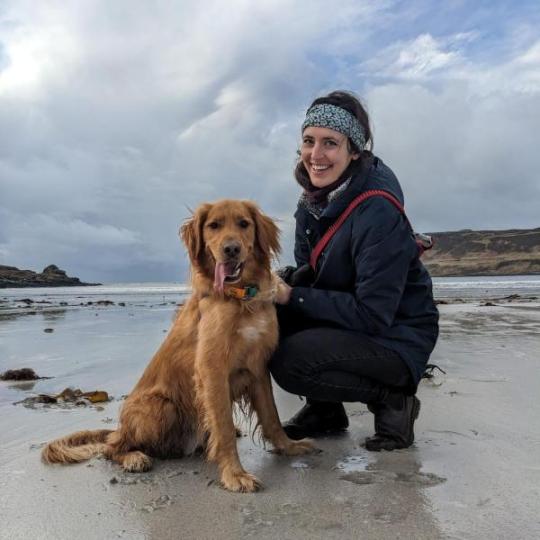
You've been at Stirling for a little over a year now and the sampling campaign as part of the MOT4Rivers project kicked off in September 2023 so we thought this would be a great time to get to know you and your research.
Q: What was your previous education in and where?
Prior to joining University of Stirling for my doctoral research, I completed my Undergraduate programme, BSc (Hons) in Physical Geography at Queen’s University, Kingston, ON, Canada and my Taught Postgraduate studies MSc in Integrated Water Resource Management at McGill University, Montreal, QC, Canada.
Q: You started your PhD in October 2022, what's the doctoral research all about?
I am trying to improve monitoring of sewage pollution in rivers. Sewage pollutes water, spreads illness/disease, and can be harmful to people and wildlife. Across the UK, there is increased awareness and concern about the amount of raw sewage being discharged into waterways. However, given the time, money, and resources required for monitoring discharges, we only have a fraction of understanding about the frequency and impacts of these events.
I am working with the University of Stirling and Scottish Water to advance water quality management with high-resolution monitoring and real-time delivery of data. I am testing the use of optical sensors to constantly monitor microbial pollution. We are trying to find out how well they work, and how the data is impacted by various factors like the sensor’s placement within the river, what the surrounding environment is like, how far downstream it is located from the discharge location, and so on. The results of this research could help improve current understanding of spatial and temporal microbial water quality dynamics in rivers. The end goal of this project is to contribute to better forecasting to protect human health, and better-informed water quality management/interventions to improve surface water conditions. It would cost billions to completely overhaul the wastewater system network, so better monitoring could help target and optimize interventions within budgetary constraints.
Q: What is the role of your doctoral research in the MOT4Rivers project?
Within the MOT4Rivers project, my research is looking at the contributions of the wastewater network into the River Almond catchment; while the larger team is covering all sorts of pollutants and emerging water quality concerns, I am more specifically focusing on the spatial and temporal occurrence of sewage in the catchment.
To do this, I am taking traditional lab-based measurements of faecal coliforms (mainly E.coli) as well as optical sensor readings of samples collected across the River Almond catchment.

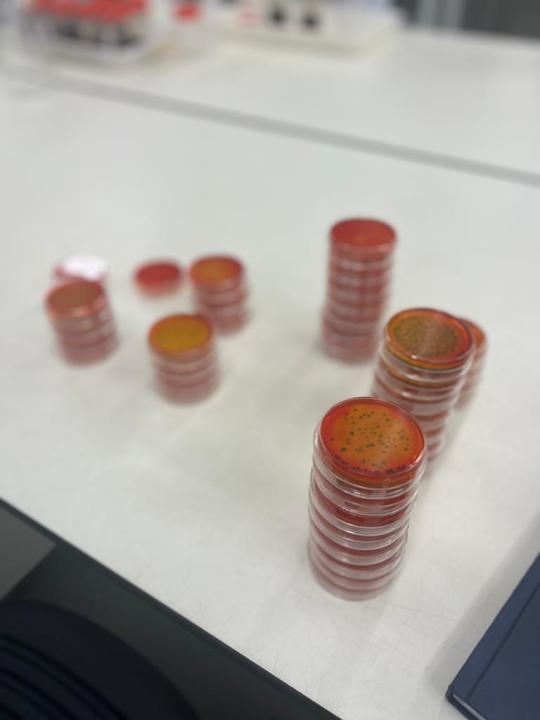
Q: Have you made any interesting discoveries in your doctoral research yet?
It is still early days! In working with technology, I have made some personal discoveries about how to dabble in electrical engineering, but actual data results are still to come!
From a catchment-perspective, I would advise that if you are participating in a litter-pick or river cleanup event, you should definitely wash your hands after…
Q: Do you have a favourite water body and if so, where and what?
That’s a hard one to answer, coming from a country with so much water!!! From top of mind, I would have to say it’s a bit of a tie between Georgian Bay and Lake Huron in Ontario. I spent a significant portion of my childhood along the Bruce Peninsula, and it’s a special place, with soft sandy beaches and beautiful sunsets on the Lake Huron side to the west, and then really cool limestone cliffs and caves with glacial blue waters on the Georgian Bay side to the east.
Q: What got you into water quality science?
I come from an interdisciplinary background, working in water quality and contaminated sites in Canada. I initially got into research doing summer internships during my undergrad. My research internships varied from working as the GIS technician for a children’s cancer research team, to evaluating a potential supplemental drinking water source for the city of Iqaluit, NU.
I really enjoyed the crossover to where research was applied to current events and issues that people cared about. I went on to work in the environmental management of contaminated sites, predominantly focusing on abandoned mine sites in Northern Canada. I really enjoyed the complexity of the work, where you must consider everything from how you’ll control remediation activities to not create a new source of pollution in the area you are trying to clean up, to what vegetation is appropriate to re-establish for the wildlife post-remediation.
I knew that I wanted to build my career as a technical expert, and found myself most drawn to people’s intrinsic emotional, personal, and cultural connections to water. As they say, water is life, and I decided to pursue a PhD which addressed water pollution in some way.
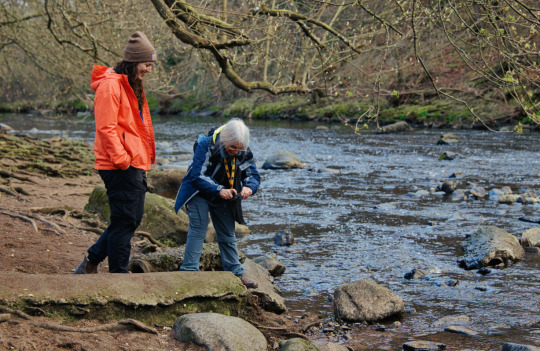

Q: What’s your favourite thing about science?
I think it is really cool that we as humans have systematically established a way to ask a question, figure out a way to get an answer, and find out something new about the world that we didn’t know before.
Q: What do you enjoy about lab work?
I really enjoy the analytical work, where you get to be hands-on in figuring out what is in the water. I enjoy the independence of it, the diversity of the workday, and getting to apply my knowledge to troubleshoot problems.
Having a dynamic workday away from the computer screen is also really nice. However, given the infamous Scottish weather, I do find there are some days where I am grateful that my lab work is indoors…
Q: If you could encourage a younger scientist, what advice would you give them?
Some of my best learning and personal growth has come via failure. It’s part of the process. Embrace it.
Also – you are not your PhD. Personally, I found that gaining work experience before pursuing my PhD has helped me approach my studies with better project management skills and work-life balance. If you can get the opportunity, working in multidisciplinary teams (i.e. working with engineers, biologists, politicians and trades people) will help give you better context of the big picture that your research sits within.
Q: If you could change public perception on one thing in the water industry, what would it be?
No matter what the packaging says, wipes are not flushable! Throw those bad boys in the bin please.
[We totally agree Bridget, for more information on how damaging wet wipes that go down the loo are to our rivers and ecosystems, visit Scottish Water's Nature Calls campaign pages.]
More broadly speaking, I think people often forget that everything that goes down the drain will eventually end up in the river.
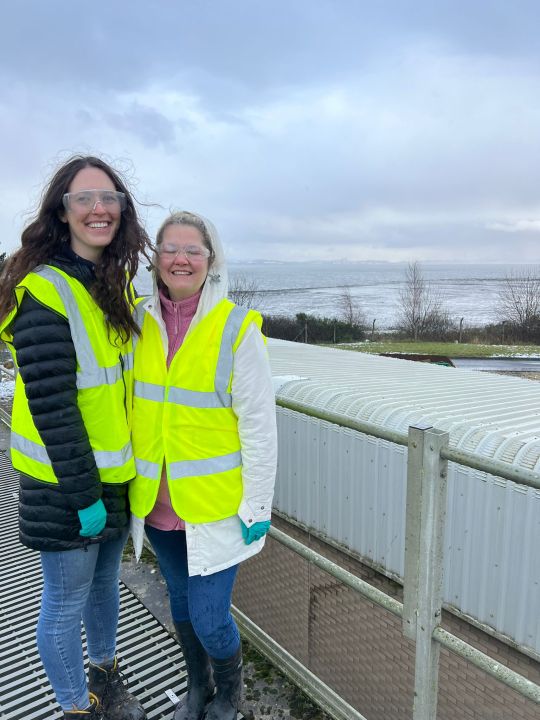
#research#hydronationchair#netzero#scottishwater#phd#waterquality#wastewatertreatment#wastewater#riveralmond#river
0 notes
Text
Boost for emissions reduction as UK tech first deployed by Scottish Water

In July 2023 a ground-breaking new technique for measuring emissions from waste water treatment plants (WWTW) was deployed in Scotland for the first time.
The infra-red tech can pinpoint tiny molecules of emissions from more than two kilometers away, giving experts a detailed read-out of greenhouse gases to allow them to eliminate them more effectively.
Waste water treatment accounts for most of Scottish Water’s emissions. Targets are in place to become operationally net zero by 2030 and achieve full net zero status by 2040.
The use of Grandperspective’s scanfeld® technology is a sector-first in the UK and will revolutionise understanding of gas emissions and transform treatment processes so they become environmentally sustainable. We first reported on the technology and it's potential implementation in October 2022 in our post on our first Process Emissions trial.
Scottish Water operates more than 1800 waste water treatment works in cities, towns and rural communities.
Existing techniques for identifying emissions only allow for localised understanding of emissions. The use of Fourier Transform Infrared (FTIR) technology will allow for a larger area to be scanned for nitrous oxide, methane and carbon dioxide and the role that treatment works play in emitting them.
The solution implemented at a WWTW near Glasgow was identified through the Hydro Nation Chair programme, based at the University of Stirling. Around 200 businesses globally were assessed for their suitability. The HNC Technology programme led by Senior Innovation Fellow David Millar joined forces with Scottish Water’s Net Zero Research and Innovation lead Susan Lee to select the best technology.
David Millar said: “We have selected this technology for trial because it offers a level of granular detail, which we hope will deepen our understanding of emissions from wastewater treatment plants. Identifying, quantifying, and locating the sources of emissions at these plants is vital as we work towards the target of going beyond net zero by 2040.”
Susan Lee said: “This is a great opportunity for Scottish Water to build a deeper understanding of how much we are emitting on a whole wastewater treatment site scale. This work will complement the industry best practice methods we are already adopting to quantify emissions to take steps to reduce them.”
Scotland Hydro Nation Chair Professor Andrew Tyler said: “This is an exciting milestone. This UK and sector first deployment of Grandperspective’s scanfeld® solution will enhance our understanding of greenhouse gas emissions from waste water treatment processes and establish a baseline against which we can assess change.”
George Ponton, Head of Research and Innovation at Scottish Water said: “The Hydro Nation Chair programme was established to bring thought leadership, research excellence and innovative solutions from Scotland and beyond, focused on addressing the key challenges facing the water sector in Scotland.”
Peter Maas, Chief Technology Officer, Grandperspective, said: “We eagerly anticipate the results of Scottish Water's scanfeld® deployment. The technology's potential to drive sustainability and facilitate emissions monitoring is truly promising. I am excited to support Scottish Water's journey towards a greener future."
0 notes
Text
A meeting of minds
Representatives from two Hydro Nations (Scottish Water’s Hydro Nation Chair programme, the Scottish Environment Protection Agency and Deltares) met in Delft in November.

Following many years of productive collaboration between the University of Stirling and Deltares through key European programmes (including DANUBIUS-RI, Danube4All; MERLIN, and forthcoming LandSeaLot), a joint workshop explored further collaborative opportunities through state of the art digital technologies and engineering facilities to support research and innovation in the areas of climate adaptation, floods and droughts and resilient communities.





0 notes
Text

Blue Spaces: Connecting Humanities, Social Sciences and STEM Researchers on Scotland's Water
A one-day workshop to further develop interdisciplinary connections between researchers in the Blue Humanities.
Following a successful meeting of minds to explore interdisciplinary in the race to net Zero between Social and natural scientists, the Hydro Nation Chair Programme is delighted to be hosting a one-day workshop to further develop interdisciplinary connections between researchers in the Blue Humanities and researchers aligned to social sciences or scientific disciplines.
Join us at the TIC Building, University of Strathclyde on Monday 5th June 2023
Sign up via Eventbrite: https://lnkd.in/eHtJdMx4
The workshop is designed to bring together researchers who are flexible and enthusiastic about cross-disciplinary approaches to research involving water. In doing so, we aim to explore how we use and manage water effectively in Scotland, address concerns over water quality (which can include healthy rivers and seas) and access to water, and how the water industry in Scotland can reach Net Zero. Interests can range from work around hydration and health outcomes, to those working on water quality and pollutants.

Loch Katrine; Photo Credit - Scottish Water
This workshop is a joint Stirling-Strathclyde event a to enable informal as well as formal conversations, but we expect that hybrid attendance will be possible.
The main focus is how we use and manage water effectively in Scotland, concerns over water quality (which should include healthy rivers and seas), access to water, and how the water industry in Scotland can reach Net Zero. So interests can range from work around hydration and health outcomes, to those working on water quality and pollutants. The aim really is to put together groups of people who are flexible about what they might research in the future and are enthusiastic about it having something to do with water, rather than people who are already experts.
The day will consist of a number of short presentations on ongoing/emerging research projects that relate to Hydro Nation Chair research themes and priorities; a post-lunch networking event; and a brief concluding discussion of common themes and priorities that have emerged over the day.
DRAFT AGENDA:
1. Very short presentations (5 minutes, 3 slides) in which participants introduce an ongoing/emerging research project which focuses on Scottish water(s), briefly state how it might relate to the Hydro Nation Chair research themes and priorities, and then comment on how their project might benefit from interdisciplinary approaches and the questions/issues they might have around this. The number of presentations will depend on interest and availability but we should be able to fit 10+ into a morning while allowing time for a break.
2. A post-lunch networking event where people can ‘match’ themselves in relation to their ability to respond to questions and issues raised: this will be set up to enable circulation and maximise opportunities for multiple discussions.
3. A brief conclusion for collective discussion of common themes and priorities that have emerged from the presentations and conversations – are there commonalities across our disciplines, and if so, what are they?
The intent is that this focused approach will enable people to offer help, advice, and ideas tailored to particular research projects, and to ‘attach’ themselves to projects for the future, and/or to come up with innovative ideas that spin out from current projects. The format will be designed to foster sharing of expertise and contacts and to enhance participants’ understanding of the wealth of interdisciplinary research into Scottish water.
💧
Don't forget to Sign up via Eventbrite by 25 May
0 notes
Text
Event: Knowledge Transfer Partnerships taking you to net zero and beyond

Join our friends from Scotland's International Environment Centre (SIEC) for this exciting (free) event on how Knowledge Transfer Partnerships can help you and your organisation achieve Net Zero.
Event: Knowledge Transfer Partnerships taking you to net zero and beyond
Tuesday 28th March 2023 | 09:00-12:00 | Stirling Court Hotel
Given the current climate, becoming net zero may be part of your planning, but may not be a priority. And that may well be due to time and money. Two things always in short supply when you are running your business. Join Scotland’s International Environment Centre, part of the University of Stirling, to discover how you can have more of both.
We will share no nonsense insights on how to reduce your energy consumption and bills and therefore carbon footprint.
Perhaps of most interest to you will be Knowledge Transfer Partnerships. A nifty means of employing skilled staff to focus on a particular opportunity, a fraction of their salaried cost. And because change doesn’t happen overnight, the benefit of opting for one, two or three years to meet your ambition.
Sounds too good to be true? There’s more. Hear about our Help to Grow mini MBA with 90% funding and our fully funded Graduate Apprenticeship in Data Science.
The morning will take you through a series of thought provoking presentations, provide advice on business support and funding and hosts an informed panel discussion covering multiple aspects of how to become a net zero organisation, the challenges and opportunities.
Book your free place.
0 notes
Text
Event: Knowledge Transfer Partnerships taking you to net zero and beyond

Tuesday 28th March 2023 | 09:00-12:00 | Stirling Court Hotel
Our friends in Scotland's International Environment Centre (SIEC) are running an event we thought might be of interest to you. Interested in achieving Net Zero? Want to find out more about you can do that through a Knowledge Exchange Partnership?
Then joining SIEC on 28 March at the Stirling Court Hotel is for you.
Event Details:
Given the current climate, becoming net zero may be part of your planning, but may not be a priority. And that may well be due to time and money. Two things always in short supply when you are running your business. Join Scotland’s International Environment Centre, part of the University of Stirling, to discover how you can have more of both.
We will share no nonsense insights on how to reduce your energy consumption and bills and therefore carbon footprint.
Perhaps of most interest to you will be Knowledge Transfer Partnerships. A nifty means of employing skilled staff to focus on a particular opportunity, a fraction of their salaried cost. And because change doesn’t happen overnight, the benefit of opting for one, two or three years to meet your ambition.
Sounds too good to be true? There’s more. Hear about our Help to Grow mini MBA with 90% funding and our fully funded Graduate Apprenticeship in Data Science.
The morning will take you through a series of thought provoking presentations, provide advice on business support and funding and hosts an informed panel discussion covering multiple aspects of how to become a net zero organisation, the challenges and opportunities.
Book your free place.
0 notes
Text
Exploring interdisciplinarity in the drive to net zero workshop
Workshop: 6th March 2023, Technology & Innovation Centre, University of Strathclyde
Through funding from the Natural Environment Research Council (NERC) to the Centre for Water, Environment, Sustainability and Public Health at the University of Strathclyde, Prof Ashleigh Fletcher and the Hydro Nation Chair Programme are hosting a workshop to explore interdisciplinarity between the sciences in a drive to net zero.

This bridging the gap workshop is aimed at developing links between the developing research base, identified as part of the Hydro Nation Chair programme, and social scientists from across the UK. The primary objectives are to:
recognise the links between these groups of researchers,
establish disciplinary norms and
identify what we need to understand about each other.
The primary outcome of the workshop is to facilitate a better working relationship to truly integrate and embed alternative research methods within developing projects and studies. More information on the workshop can be found in the following workshop summary.

Please confirm attendance, along with any dietary requirements and consideration for a travel bursary to Dr Fiona Millar via [email protected] by 6th February 2023.
Workshop details: The workshop will take place on 6th March 2023 at the TIC building in Glasgow (99 George Street, Glasgow, G1 1RD). As the agenda is being finalised, we are asking attendees to hold 09:30-16:30 but we are aiming to run the main workshop content between 10am & 3.30pm.
Target Audience: The workshop aims to engage researchers from a broad range of disciplines but with a common interest in enhancing working practise to more fully understand the environmental and societal impacts of climate change. In order to capture all expertise and interest across all levels and disciplines, without any prior agenda, attendance is welcomed across career stages, subjects and experience of interdisciplinarity.
Workshop Attendance: Primarily we would like this workshop to be in-person, however we appreciate the benefit of a hybrid event and, as we wish to target a number of audiences, the event will be set up as hybrid, with online attendance possible.
To support in-person attendance, we have 40 travel bursaries, of up to £125 per person, available. Please note that award of these bursaries will prioritise low- and no-income attendees; hence, attendees are encouraged to explore other means available to them for financing expenses in the first instance. We would also like to encourage users of these bursaries to consider green transport methods where possible.
If you wish to take advantage of a travel bursary please indicate this in your response to this invitation, noting how this bursary will support your attendance in person and including indicative costs (note that exceptional higher travel costs may be considered on a case-by-case basis).
#events#research#hydronationchair#netzero#interdisciplinarity#innovation#social science#natural science
0 notes
Text
Scotland Hydro Nation Chair to lead water quality project to protect river ecosystems
New research led by the University of Stirling is to explore how pollution and climate change are impacting freshwater ecosystems for the first time. Prof Andrew Tyler provides a summary of the project and its ambitions.

The Natural Environment Research Council (NERC) launched a call in April 2022 for projects that would address a significant gap in our understanding of how pollutants enter, transform and interact within rivers, and with the ecosystems that rivers support. The Understanding changes in quality of UK freshwaters call is part of a £8.4 million programme of research funded by NERC, with Department for Environment, Food and Rural Affairs (Defra) that will support innovative collaborations including those with intervention-focused organisations and practitioners, creating a community of researchers and funding projects that span the three thematic areas of the programme.

Prof Andrew Tyler, Scotland Hydro Nation Chair, leads one of the five projects funded. Prof Tyler's project, MOT4Rivers, sees a consortium led by University of Stirling pulling on expertise from the James Hutton Institute, UK Centre for Ecology and Hydrology, The School of Engineering at the University of Edinburgh and University of Glasgow, along with valuable project partners to investigate how pollutants interact with rivers and ecosystems, and devise a system to monitor and measure pollution.
For centuries, human activities have impacted our rivers by shifting the sources and combinations of physical, biological and chemical drivers and pressures. However, our understanding of their impact on ecosystems has been limited by viewing each in isolation and not considering their combined effects.
Our freshwater species are being challenged by a bewildering combination of pollutant cocktails (mixtures) whose effects are poorly understood. At the same time, climate-change driven shifts in water quantity (more frequent floods, longer periods of low flow) and warming waters are expected not only to be influencing the function, physiology, abundance and biological timings of freshwater ecological communities directly, but also the delivery and potential toxicity of these cocktails respectively. It is not simply the water pathway that we need to consider, but also the re-mobilisation of contaminants and the changing patterns of exposure that potentially magnify the effects on biota (i.e. organism sensitivity). Increasing urbanisation and changes in rainfall intensity and its seasonality, different catchment processes all have the potential to increase inputs of these emerging contaminants to the environment.
Our research, through the £2million MOT4Rivers project, will address these gaps by embracing the digital revolution through innovative technologies and transformative data analytics to deliver a step change in our knowledge and understanding. Our approach has three strands. The first will turn a spotlight on the Almond catchment in West Lothian, a sub catchment of the Firth of Forth catchment. The Almond is a typical catchment encompassing rural to urban land uses through rigorous investigations that will deliver high temporal resolution data. This investigation will provide new understanding of acute/event-based impacts on freshwater ecosystems.

The River Almond in West Lothian; Image credit: Scottish Water
Secondly, we will use national scale datasets and cutting edge data analytics tools to investigate the impacts of longer-term exposure to pollutant cocktails across the UK on water quality and ecosystem health. These findings will provide new understanding of chronic/long term impacts on freshwater ecosystems.
Thirdly, we will integrate our new evidence base and understanding into a risk-based probabilistic model. The model will allow the exploration of the relationships between environmental change, declining river quality, multiple pollutants and ecosystem impacts. Our research will develop the evidence base to understand changing pollutant sources, delivery pathways and the environmental tolerances and boundaries within which organisms can thrive and flourish (i.e. the ecosystem safe space).
Together, MOT4Rivers will inform priorities for policy, regulation and investment to design cost effective programmes of measures to promote and enhance sustainable freshwater ecosystems under a changing climate.
For more information on the project please see the University of Stirling press release, follow #HydroNationChair on Twitter and come back soon for a project webpage under R & I Infrastructure.
#You can keep up to date with the other four projects and overall programme via the Freshwater Quality Programme twitter and #UKFreshwaterQualityProgramme which is being championed by the University of Leeds.
#research#innovation#hydronationchair#team#industry#funding#rivers#transformation#NERC#DEFRA#Pollution#RiverAlmond
0 notes
Text
Hydro Nation Chair Catalyst Fund projects making progress

On 9th Nov 2022, the #HydroNationChair team welcomed award holders from the most recent rounds of the Catalyst Fund to the University of Stirling for a Mid Project Progress review meeting.
Along with colleagues from across Scottish Water, attendees heard from the 7 projects funded to date on their progress, findings and challenges before enjoying some time to network and collaborate further.
In this blog post, Prof Ashleigh Fletcher, Hydro Nation Chair Research leader Fellow who led the inaugural HNC Crucible on Process Emissions reflects on the meeting.
"What an exciting time to be part of such an innovative research community!"
Last week, we welcomed the funded projects from our two Crucibles to the University of Stirling to present their progress to date – and it was great to see how much has already been achieved. All teams were represented and gave an overview of their work – making it accessible to the varied audience in attendance.


Award winners from left to right: David Millar, University of Stirling; Richard Baker, University of St. Andrews, Andrew Tyler, Scotland Hydro Nation Chair; George Ponton, Head of R & I at Scottish Water; Alexis Walter, James Hutton Institute and Diana Valero, James Hutton Institute.
It was also really welcomed to see that the ethos of the Hydro Nation Chair programme has been taken to heart by these collaborative units – not only do we see diverse teams uniting to address common challenges, there is a real sense of thinking laterally about the problems being addressed, and a definite move to whole systems thinking.

Diana Valero, PI for Wastewater project presenting at the Mid Project review meeting.
From the fantastic co-creation framework in the Wastewatership project, to the adaptive technology being developed by the Living Lids team, there is a real sense of bringing the community together and developing strategies that, not only address the issue at hand, but that there is minimal to no negative impact by doing so.
It was also valuable to have so many Scottish Water colleagues in attendance and a wide range of questions from all attendees – this really helped in understanding the work being undertaken, and also to acknowledge the additional challenges to come – new waste streams, utilisation of resources and contributions to pollution. Running this as a hybrid event did have its challenges but none that were insurmountable, and the flexibility this community shows in working together, and across different platforms and backgrounds, makes me very hopeful that we will meet our mission targets.
If you want to come and join the conversation or get involved in any other way – just let us know!

0 notes
Text
HOW ECOLOGICAL OVERSHOOT IS SHIFTING ECONOMIC RULES
The Hydro Nation Chair R & I Programme are delighted to be hosting Dr Mathis Wackernagel for a week of events around Ecological economics, and biocapacity.

Dr Mathis Wacknernagel is a leading sustainability advocate, co-founder and President of Global Footprint Network. In collaboration with his PhD supervisor, Professor William Rees, Mathis created the Ecological Footprint - an accounting measure that measures the demand on and supply of nature, see the illustration below taken from the Ecological Footprint website.

Events include a thought leadership workshop, student lecture at the University of Stirling on Wednesday 23 Nov 1-2pm as part of the BES External seminar programme and hosting, in partnership with the Royal Society of Edinburgh, a public lecture on Monday 21 November (6-7pm at RSE, in Edinburgh) entitled “HOW ECOLOGICAL OVERSHOOT IS SHIFTING ECONOMIC RULES”.
Overshoot is humanity’s second largest risk in the 21st century and this RSE event will explore the options that we have once we accept our context.

You are cordially invited to join us at the Royal Society of Edinburgh on 21 Nov, please register here.
Overshoot is humanity’s second largest risk in the 21st century. This event will explore the options that we have once we accept our context.
Earth Overshoot Day marks the date when humanity has exhausted nature’s budget for the year. In 2022, Earth Overshoot Day fell on Thursday 28 July.
Human demand on nature can be tracked. Even conservative estimates show that it has exceeded what the biosphere can renew. If this is so, what are the implications? Who are the winners and the losers? What might be the most effective strategies, for businesses, cities, or entire countries? Are these strategies worth their effort? These are the questions the event will explore.
0 notes
Text
Site Visit: First Process Emissions Trial

On 17th Oct 2022, Senior Innovation Fellow, David Millar ventured out on site at Scottish Water for the First Process Emissions Trial. Find out more about the trial and what it means in David’s blog.
My role within the Hydro Nation Chair R&I programme, as a senior Innovation Fellow is to help build the technological capability of Scottish Water so they can transition beyond Net Zero by 2040. No easy task on both fronts.
Technology is not the only answer to the Net Zero challenge, but it will certainly be a key enabler.
Behind the scenes I am busy building a transformational start-up support offering which will launch in 2023. This programme aims to support start-up companies and provide the necessary, one-stop shop of resources to help them survive and thrive. However, technological solutions don’t always have to be new, there are many technologies and developments already in existence that can be applied to the water sector and support Scottish Water’s realisation of their Net Zero ambitions. To that end, I have also been busy scouting the globe for existing technology aligned to our four core missions (Process Emissions, Infrastructure Emissions, Circular Economy and Enhancing the Natural Environment). Such scouting activities are called Horizon Scans and involve desktop searches of various resources, such as investor portfolios, conference agendas, personal networks and online platforms that monitor new technology start-ups from around the world. Some good old Google searches also came in useful.
From my Horizon Scan, I identified and made contact with over 180 technology business, offering an array of technologies that could be useful. Together with Programme Managers from Scottish Water, these 180 opportunities were then rigorously assessed and we have now selected a handful to take to field trial across the Scottish Water network.
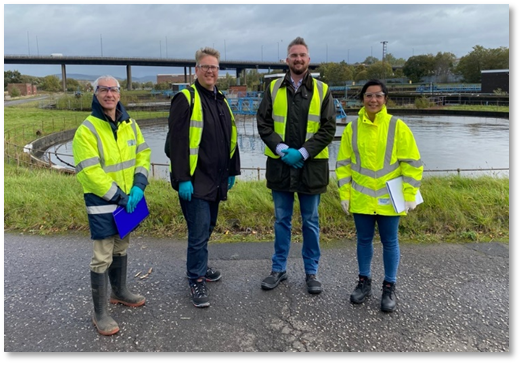
On 17th Oct 2022, we reached a milestone in this process with our first technology provider, Grandperspective, visiting from Germany to scope out the Laighpark wastewater treatment works near Paisley. The site visit involved Gerd from Grandperspective; Susan Lee (Scottish Water’s Net Zero Progamme Lead); Chris Bonnington (Scottish Water Project Manager); myself and Laighpark Operations technicians and electrician.
We were met in Paisley with the fairly standard mix of very windy, chilly and wet weather, to which Gerd from Grandperspective noted “you certainly get some interesting weather around here!”
Most process emissions sensors are based around commonly used Nondispersive InfraRed (NDIR) Spectroscopy. This technology requires the gas needing measured to enter a sample chamber before it can be analysed. For open plan facilities, such as wastewater treatment plants, this methodology can prove difficult to analyse whole site emissions due to the influence of wind, weather and the potential that gases of interest don’t do as their told and enter the sample chambers when needed. To get effective and reliable measurements, you would also require a considerable number of sensors across the site.
Grandperspective offers something more innovative called Scanfield, which is based upon a different technology called Fourier Transform Infrared spectroscopy (FTIR).
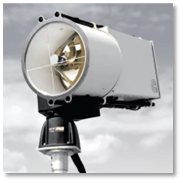
FTIR offers considerable advantages over NDIR – for example, one single device can monitor over 200 substances up to a range of 2km and at concentrations of parts per million (ppm).
FTIR enables such monitoring by measuring the infrared spectrum of absorption or emission of a solid, liquid, or gas. A mathematical process called a Fourier transform is required to convert the raw data into the actual spectrum – hence the name Fourier Transform Infrared spectroscopy (FTIR).
Pretty amazing technology and exactly the sort we need to better understand the emissions profiles associated with wastewater treatment works.
The purpose of the visit to Laighhill Park was to identify exact locations and line of sight for the device in order to monitor as much of the site as possible.
Next steps are to finalise the work packs for the instal and get ready to kick start our first technology trial under the Hydro Nation Chair R&I programme – super exciting stuff.
This site visit is one of many to come and I hope you will join us on this journey.
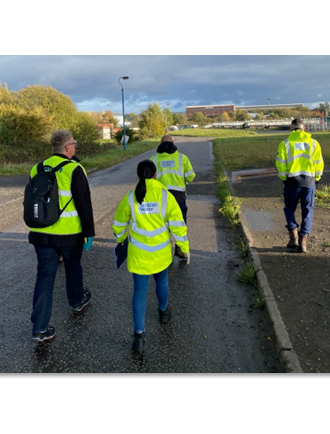
#innovation#horizonscan#scottishwater#wastewatertreatment#research#technology#netzero#sitevisit#processemissions#sensor#sensortechnology
0 notes
Text
River Restoration begins in Leven

On Saturday 3 Sept, along with the Forth-ERA team, our Programme manager Fiona Millar headed to the Levenmouth Fayre, a community day sponsored by sponsored by SGN, Diageo, Network Rail, Fife Council, Creative Carbon Scotland and the Leven Programme. In this blog she reflects on her time at the Fayre and the restoration of River Leven more generally.
It was a fabulous FREE fun day with music from ABBA, an inflatable fun run and lots of activities to keep kids and adults entertained. It was so good to see the community coming out, despite the bad weather, to enjoy the festivities and learn more about their local area.
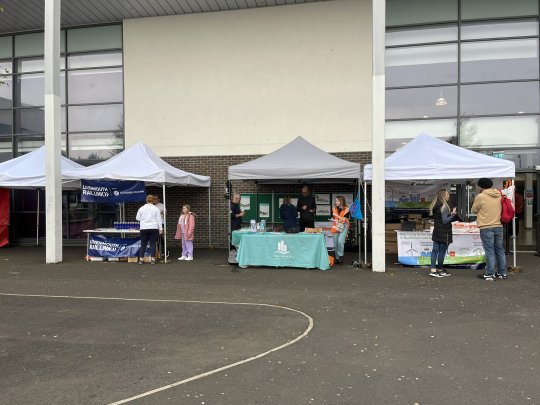
The Fayre saw stakeholders from across Leven, and Fife more generally come together to share their involvement and opportunities. Stall holders ranged from SGN promoting their Hydrogen power, network rail encouraging safety near rail tracks (did you know it’s a £1,000 fine and criminal record if you trespass on a railway line!) and Leven connectivity project asking for opinions on “Doon the dam”. There are many actors involved in the current developments of Leven and surrounding area and it was a delight to witness conversations between stakeholders and to see commonality between agendas.
Forth-ERA were there to promote the capabilities of their digital observatory, demonstrating the strength of the satellite images over Loch Leven and the indication of chlorophyll levels that help us to understand water quality (I know right, all that information from a machine in the sky!). They had some great conversations with budding scientists, including my youngest who was fascinated by colours in the satellite images (& hopefully the science behind it too).
Being at the Fayre and seeing all the stakeholders, with their differing views, responsibilities and priorities come together so positively and cohesively got me thinking.
Thirty three years I’ve been coming to Leven. My grand father, Obie Maw, ran the local Veg van and shop down by the golf course & I enjoyed many a weekend, week and summer holiday here. That’s continued into my adult life and now my two boys also enjoy coming to “Grandma’s beach house”. Thirty three years I’ve enjoyed playing at the beach, the flume in the swimming pool, whittling away pennies at the amusements and many a trip to Stuart’s the Bakery. Thirty three years and I’ve never known there was a river! (I know, shame on me right - that’s what I thought till I spoke to Brenda who in 70+ plus years has never been over the iron bridge and my mum, until last week, born and breed in Leven, hadn’t even walked along the river!).
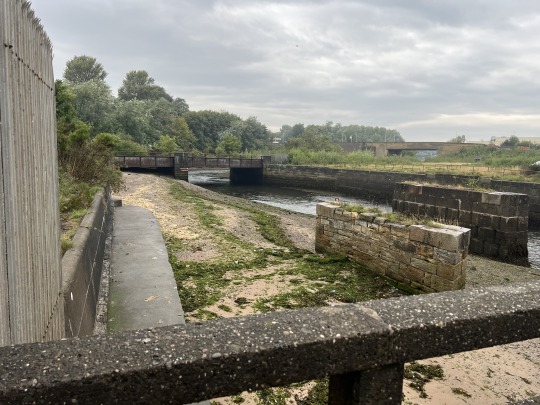
The River Leven runs from the beach, through a number of local towns to Loch Leven. It’s pretty run down, has pollution and is largely inaccessible - as our anecdotal evidence above presents. It’s about 6 miles long, and despite all the negatives above is popular for Salmon fishing.
The Leven programme is going to change that. It’s a regeneration programme with a purpose and an ambition. To open up the river, to connect communities and to drive social and economic benefit to an area that so deserves it. The rail way line (see picture below) due to open in 2024 will see a direct service to Edinburgh every 30 mins, bringing opportunities, tourism and a chance to be proud of this seaside town on the East Neuk.
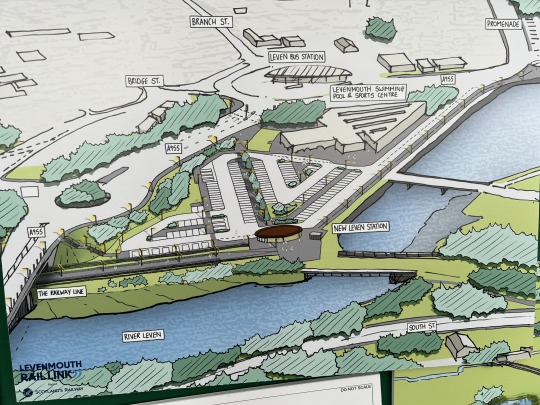
Don’t just listen to me though, Fife Coast & countryside trust explains why it’s a good idea here and find out more about the Leven programme here and keep up to date through their socials.
The Leven programme, along with the Hydro Nation Chair programme has enabled me to reconnect with this sentimental wee town, it’s opened my eyes, just as research should and does and it’s shown me a different way of seeing. I see water differently and not just as easily coming from the tap. I see communities differently and not just as people that live in one town and I see hope. Hope for Leven, it’s town and people and hope for change.
I can’t wait to keep coming back to Leven, and seeing the development and to myself, one day, walk the river alongside the railway line and think “I was part of this”
1 note
·
View note
Text
Hydro Nation Chair Catalyst Fund – what's that?

You’ve heard of the Hydro Nation Chair Crucible series and maybe seen some references to the HNC Catalyst Fund, but to be frank it’s left you scratching your head. What is a HNC catalyst Fund? Well this blog will introduce you to the Fund and our webpage on the Catalyst Fund will give you all the information you need.

The HNC catalyst fund has been set up to provide valuable pump priming funds to develop proof of concepts, trial and test technology solutions and leverage new funding to deliver next generation solutions. The catalyst fund is intended to bring people together and in line with the HNC’s vision and mission will act as a catalyst to grow research and innovation capacity to deliver Scottish Water’s strategic ambitions and Net Zero across the Water sector.
The Catalyst Fund has a number of pathways in which funds can be accessed, traditionally against the Crucible events but also through direct approaches. Our webpage indicates all the ways that you can engage with the HNC Catalyst Fund.
So far, our catalyst fund has supported 7 projects, which will be announced in due course and we look forward to not only telling their story but supporting more projects in the future.
0 notes
Text
What are Crucible events?

Crucible – what is a Crucible?
According to Merriam-Webster A crucible, a noun is
a vessel of a very refractory (see REFRACTORY entry 1 sense 3) material (such as porcelain) used for melting and calcining a substance that requires a high degree of heat.
a severe test He's ready to face the crucible of the Olympics.
a place or situation in which concentrated forces interact to cause or influence change or development… conditioned by having grown up within the crucible of Chinatown …— Tom Wolfe His character was formed in the crucible of war.
For me, definition number 3 above best describes what we are trying to achieve with the Crucible Series. The Crucible events will take a variety of forms across the Programme, from mini ½ days and online only to 2 days in person and 6 workshops across a longer period of time but whatever the formation the aim stays the same – to bring a collective of people together, into a place or a situation, under a collective topic, question, mission, to generate solutions and ways forward I.e. to cause or influence change or development as defined above.

Who should be involved?
Without sounding cliché, everyone – we all have a part to play in change and the future of Net Zero in the Water Sector. To be successful we need a variety of viewpoints and experiences, that’s what, like in definition 1, above causes the high degree of heat that creates something new. We are keen to get engagement from researchers across disciplines, from practitioners and industry partners, policy makers, consumers and local community, who come together and share their ideas, experiences, insights and expertise to collectively make change.
How do I engage?
Each event in our Crucible series will have its own short application process and having attended one before doesn’t preclude you from attending another. This application process is there to support logistics and planning of the event and also to ensure we have the right people represented round the room. There may be direct invites and everyone is welcome to pass the message and information on to others who might be interested or have a role to play in the discussions.
Sounds interesting, what’s the format?
Typically, the Crucible will start with some scene setting by Scottish Water and another industry expert, followed by breakout discussions on pre-set topics. There will opportunity across the event for networking whether that is online or in person and there will be the chance to formulate ideas into more concrete solutions / projects.
Most, if not all, of our Crucible events will have a portion of Catalyst Funding attached to it. This funding will follow a short application process, where a panel will award funding against the scheme guidelines to projects that aim to solve, innovate or collaboratively explore the Crucible Mission. For example, for our Process Emissions Crucible a Catalyst Fund of £60K was available for projects up to £15K . This funding is intended to speed up the pathway between idea and solution, give space to collaboration and innovation and deliver on solutions to Net Zero related to that Crucible mission. Find out more about the Process Emissions Crucible in Prof Asleigh Fletcher’s reflections.
Sign me up – when's the next one?
Our next Crucible event will take place on 21st June as part of the EPSRC Net Zero Conference. Join us for the Hydro Nation Chair Net Zero Mini Crucible on Tuesday 21st June (10am-1pm), via Zoom (https://strath.zoom.us/j/83033456380; Password: HNC).
We are currently planning the next three events in our Crucible Series, which will focus on Place, Enhancing the Natural Environment and Circular Economy. Dates will be available soon, so keep an eye on the website and subscribe to our newsletter, via our website, to be part of the community first to hear.
0 notes